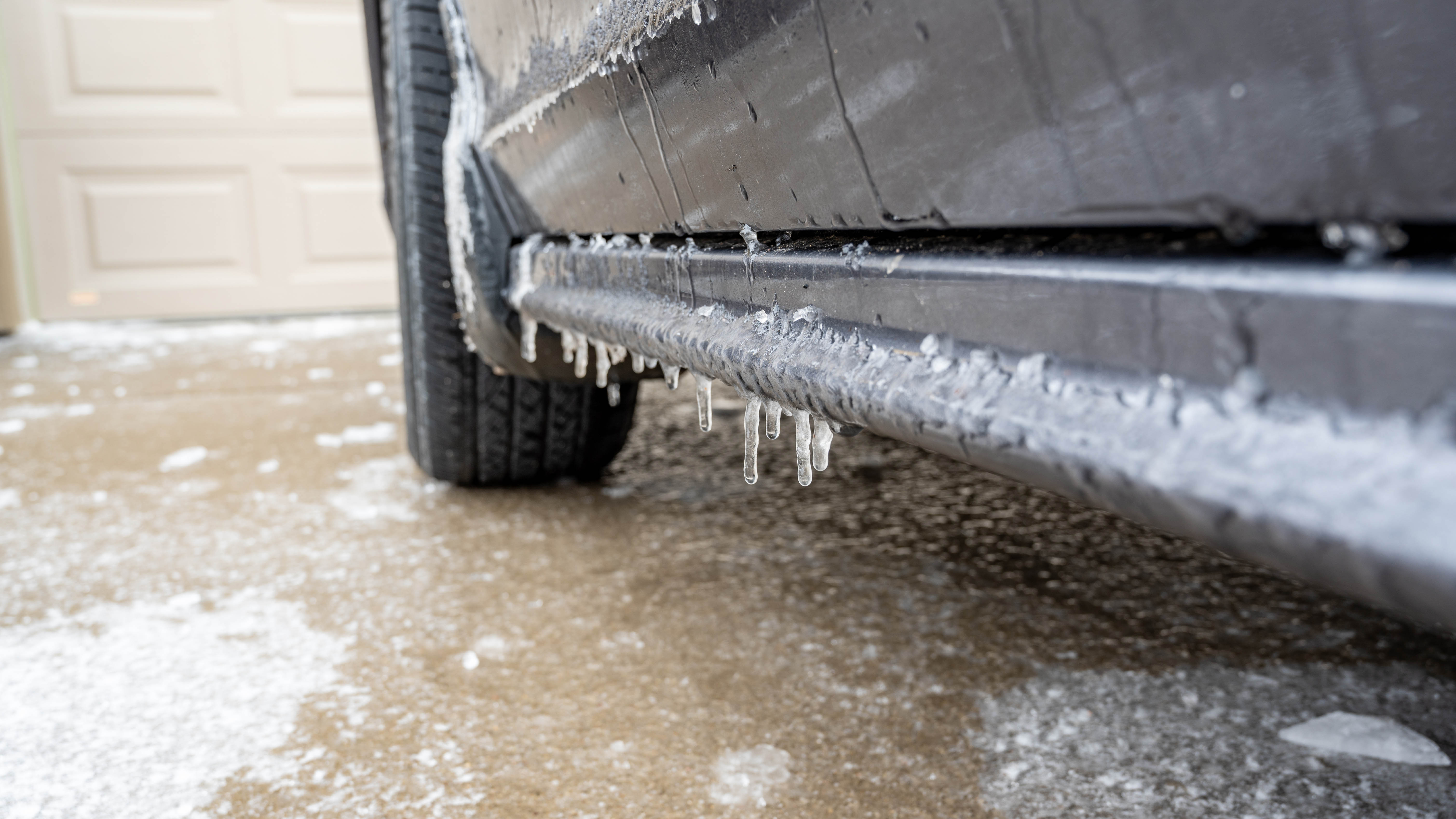How to remove ice from a driveway quickly and safely
Here’s how to remove ice from a driveway in six easy steps

If you endured heavy snowfall over the weekend, you’ll need to know how to remove ice from a driveway. Once snow starts to melt, it sometimes re–freezes overnight and becomes ice, which can be dangerous to both walk and drive on. That’s where knowing how to drive in the snow comes in handy.
If snow has covered your driveway and has turned to ice, you should remove it before attempting to drive away. This is imperative because driving on ice can result in you losing control of your vehicle and potentially having an accident. Don’t worry though — de-icing your driveway is a simple chore, which you can do with or without salt. Here’s what you need to do.
- Check out how to build a snowman
- Here’s how to clean headlights
How to remove ice from a driveway
Metal shovel
Kitty litter or sand
Rock salt OR
Rubbing alcohol
Calcium chloride
Magnesium chloride
1. First of all, grab a metal shovel and remove any immediate snow from your driveway. This is best to do even if ice isn’t obvious at first as it may reveal a hidden layer underneath. Use a sturdy metal shovel for best results — we recommend the Portable Folding Snow Shovel from Trazon ($37.99, Amazon). If you’ve got a much longer driveway, you can alternatively use a snow blower.

2. Once the ice is revealed, you should lay down some sand or kitty litter (yes, you read that right) where you plan to stand to give yourself some traction while you work.
3. Now the ice is clear to see, you can melt it more easily. You’ve got a few options here for what you can use:
- Rock salt — Rock salt is the most traditional de-icer and you can use a spreader such as the Spot Spreader Hand Spreader ($22.70, Amazon) to apply it. Just be aware that rock salt can be harmful to your lawn and flowerbeds. Rock salt is also toxic to cats and dogs, plus it can harm their paws, so you may need to try an alternative if you’ve got animals around.
- Rubbing alcohol — Rubbing alcohol has a very low freezing point (approximately -128°F or -89°C), which means it won’t refreeze once applied. You can either pour this directly on your driveway, or dilute it 50/50 with warm water in a spray bottle to extend it. However, rubbing alcohol is toxic to animals once again.
- Calcium Chloride — Calcium Chloride is known to melt ice much faster than rock salt, plus it can melt ice at lower temperatures. However, once again this can be toxic to cats and dogs.
- Magnesium Chloride — Magnesium Chloride is an effective de-icer which is more pet-friendly than the alternatives. This can be purchased in flake as well as pellet form and then scattered across the ice. We recommend HARRIS Kind Melt Pet Friendly Ice Melt ($36.99, Amazon).

4. Apply your chosen de-icer evenly for the best results.
5. Once you’ve applied your chosen de-icer, you will need to wait for 15-30 minutes for it to take effect, depending on the thickness of the ice and the temperature. If you’ve bought a dedicated de-icer, follow the instructions for application and time to wait.
Get instant access to breaking news, the hottest reviews, great deals and helpful tips.
6. Once the ice has partially melted, get out your shovel again and remove the loose ice from your driveway. Reapply your de-icer and repeat as necessary.
There you have it, your driveway should be free of ice. If your car needs the same treatment, here’s how to defrost a windshield.
Does vinegar melt ice on the driveway?
While some sites recommend using vinegar as a de-icer, we wouldn’t recommend it. This is because the freezing point of vinegar (28 degrees) is not much lower than water, so if you’re applying it in these temperatures, you’re just adding to the ice.
Next: Speaking of ice, you can learn how to make ice cream without an ice cream maker at home.

Katie Mortram used to be a Homes Editor for Tom's Guide, where she oversaw everything from kitchen appliances to gardening tools, as well as smart home tech. Specializing in providing expert advice for cleaning and home manintenance, she now works as Household Advice Editor for Good Housekeeping.
